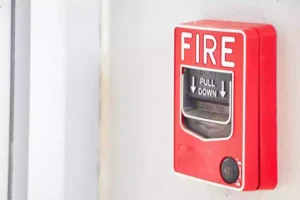Choosing the Right Fire Alarm System for Your Home
07/06/2017
Did you know that about 300,000 household fires occur in the United States each year? Tragically, these fires result in approximately 3,000 deaths — many of which could have been prevented by a properly functioning fire/smoke alarm system. Fire alarms provide the early warning to residents that can mean the difference between life and death — law in virtually every jurisdiction also requires them.
As fire alarm technology continues to evolve, consumers have more options when choosing a fire alarm system for the home. Knowing how to choose a residential fire alarm system requires a fundamental understanding of the basic types:
-
Ionization:
Ionization alarms typically provide the fastest response to open-burning fires. This gives residents more time to escape fast-moving fires fueled by highly flammable sources such as clothing and paper. While ionization alarms feature heightened sensitivity to fire, they’re also susceptible to false alarms caused by cooking fumes.
-
Heat:
These alarms are the best choice for fire detection in kitchen and cooking areas. They’re designed to respond to an intense build-up of heat instead of smoke or fumes. However, this makes them a poor smoke detection solution for sleeping quarters and other living areas of the home.
-
Optical:
Optical alarms rely on infrared technology. These single-sensor alarms are a good choice for detecting a heavy volume of smoke from slow-burning, smoldering fires such as those produced by mattresses, furniture and television sets. On the downside, optical alarms are not known for their ability to detect heat.
-
Multi-sensor:
Multi-sensor alarms contain a combination of optical and heat sensors, making them the best all-around fire protection solution for a home. The sensors deliver signals to intuitive software built into the detector, which also helps to prevent false alarms. The biggest drawback to installing multi-sensor detectors is their relatively high cost.
The Importance of Fire Alarm System Interconnectivity
Most modern fire alarm systems are compatible to interconnectivity, meaning that each alarm can be connected with all the others in the house. Why is this important? When fire alarms are not connected, it’s possible that only the people in the room where the fire breaks out will hear the alarm. With an interconnected system, everyone in the home will hear the alarm simultaneously, increasing the odds of a safe escape for all occupants.
There are two methods for interconnecting fire alarms. A hard-wired connection entails running cabling between each alarm in the house to deliver the signals transmitted by the system. A hard-wired system can be extremely labor-intensive regarding installation and maintenance. Other alarms enable connection via radio frequency waves, which eliminates the need for hard-wiring.
Titan Alarm, Inc. Can Help You Select the Best System for Your Home
If you live in the Phoenix, AZ area and are having trouble choosing a residential fire alarm system for your home, Titan Alarm can help. We’re experts in home fire alarm system design and installation — we’ll ensure you select the best system for your needs and budget. Contact us to schedule a free home fire alarm consultation today.



